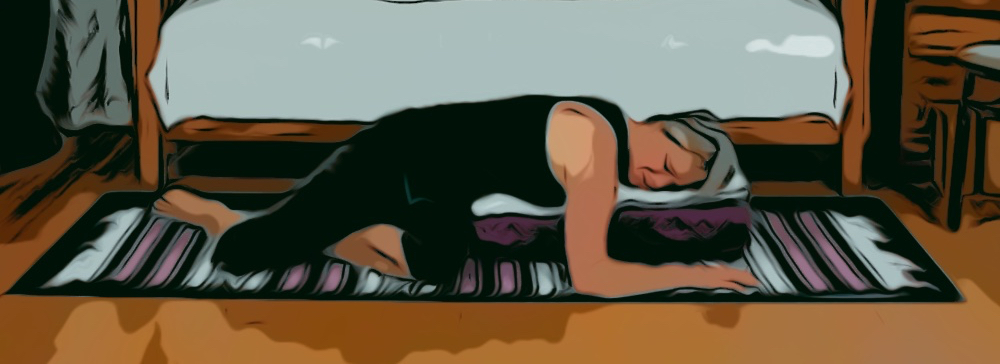
Intentional relaxation is as important as building strength for health and healing following total hip replacement. Yoga offers a whole range of wonderful ways to relax in the form of Restorative Poses.
The main goal of Restorative poses is to prop your body in the shape of a yoga pose in a way that feels comfortable and that allows you to relax. When we intentionally relax we provide our system with the ideal conditions for healing. Studies show that a regular yoga practice which includes restorative poses, builds resiliency to pain and improves our ability to cope with stress.
So that’s why we have restorative poses with their practical benefits to support our system as we go through THR. But the bonus is that a good session with some intentional relaxation just feels darn good! As a friend said to me: “Taking time to refresh ourselves with a restorative pose is like taking a drink of cool water when you are feeling dry and thirsty.”
Some Restorative Poses can be done immediately following surgery. Corpse Pose is a staple in yoga classes and it is easy on the hips. It can be done on the floor, on a bed, in a recliner, or anywhere you can stretch out your body to be relatively flat and with the limbs relatively straight. This low-stress positioning of the body means you can take advantage of the benefits of these poses right away!!
Steps to practicing intentional relaxation:
1) Make your body comfortable.
– Take your time setting up.
– Adjust your props so that your body and hips are well supported and you feel you could sustain the pose for at least 10 minutes.
– Once in the pose, give yourself a minute to ponder if you are really comfortable; it can take a few moments for your body to let you know.
– It’s always ok to move or adjust if you begin to feel uncomfortable in the middle of the session.
2) Let your awareness deepen, observe what you feel, and take note of the sensations that are present.
– Sensations can be strong or dim. Sensations can be pointed like sharp aches or pains, perhaps associated with your hips or other parts of your body. Or they can be more generalized like a feeling of humming or buzzing in certain areas or throughout your body.
– Try to observe what you feel without making judgements about whether they are good or bad. Be curious and watch like you are an impartial observer just taking notes on what you feel.
3) Take 3-4 deeper inhalations and long slow exhalations. If you are familiar with Ujjayi Breathing (or “Ocean Breath”), here is a good time to practice it.
– Take advantage of relaxing momentum of the exhale and allow your body to start to get heavier with each round of breath.
4) Now let go of the longer breaths and let your body begin to breath at its own natural rhythm. You have started the process of relaxing by using the longer inhales and exhales and so now you can release control while all the time you keep on riding the wave of the breath. Relax a bit more with each exhale.
– If your mind wanders (and it will!), no worries, just bring your attention back to your breathing. You may have to do this many time during your restorative practice.
– If you are aware of tensions, aches, pains, or any other noticeable sensations, let your attention rest on those spots with curiosity while you exhale.
5) Stay in the pose for 5-10 minutes, or longer if you want. You are calming your nervous system, promoting healing in your body, and building resiliency to stress and pain.
6) When you are ready to come out of the pose, take a few deeper breaths to prepare to move. Move slowly into Corpse Pose and rest there for at least a minute or two observing how your body has responded to the Restorative Pose.
You’ve just done a very caring and nurturing thing for you whole system. Namaste 🙏
Become a Yoga for Hip Replacement member here
Suggested viewing: Restorative Poses
Studies and Articles:
Yoga Helps Pain and Brain
Yoga for Pain: What the Science Says
How Does Yoga Relieve Chronic Pain?
“The Power and Mysticism of Ujjayi Pranayama”
“What The Vagus Nerve Is And How To Stimulate It For Better Mental Health,”
“Chronic stress puts your health at risk”
Yoga Effects on Brain Health: A Systematic Review of the Current Literature

Thank you!
You are welcome! Best of luck on your hip journey! ~E